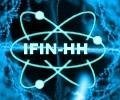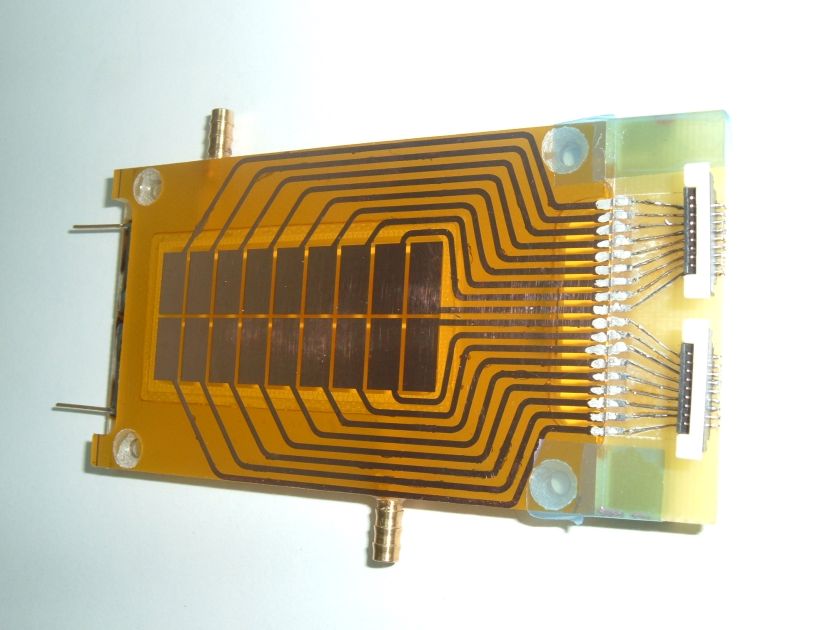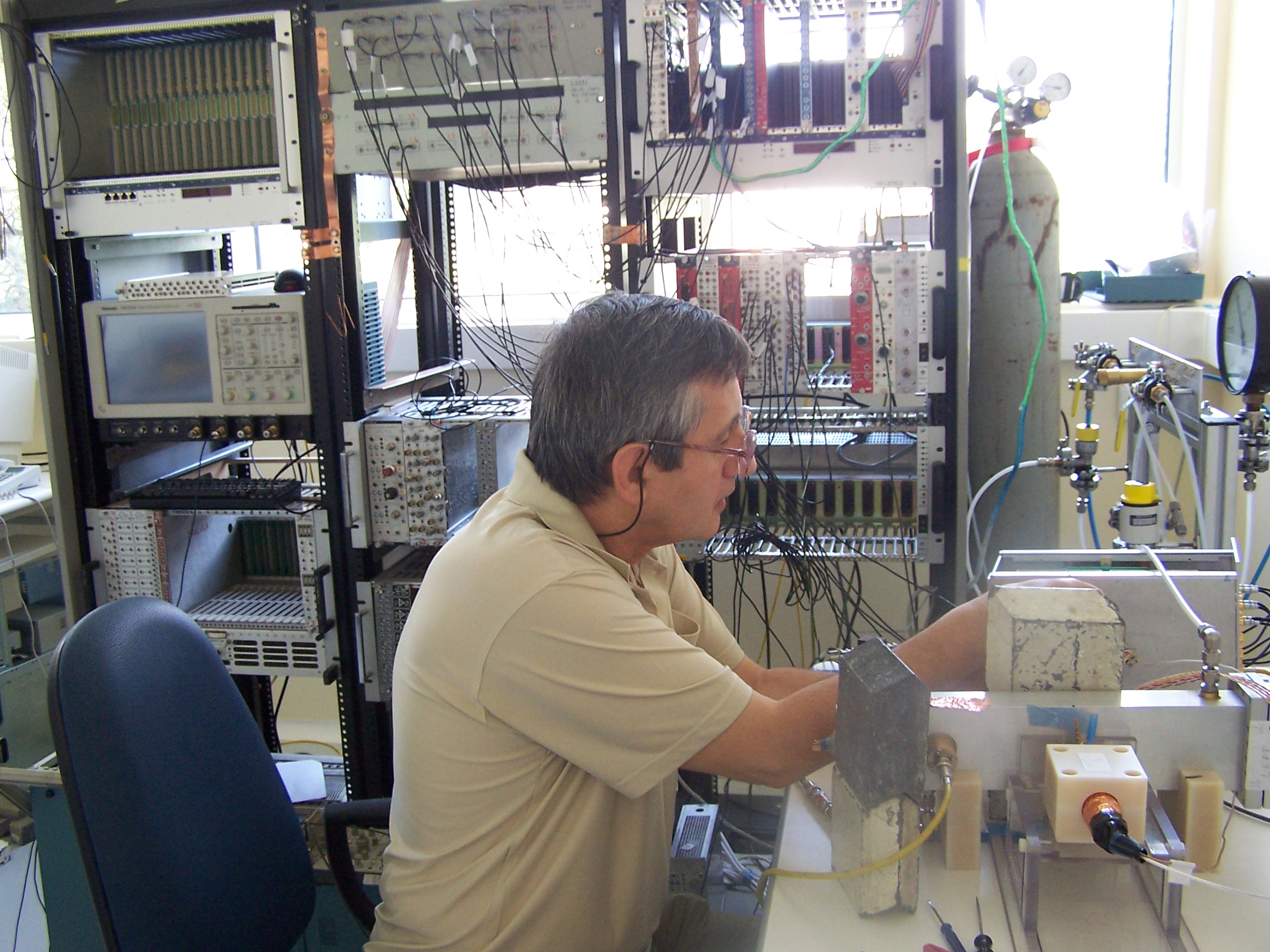 NIHAM@NIPNE
NIHAM@NIPNE

Advanced High Counting Rate Detectors, Associated Front-end Electronics
and
Nuclear Data Evaluations
General information about this project
Introduction
Motivation and Objectives
Progress Reports
Contact
1. General information about this project
This project is part of PNCDI-2 National Program, the main instrument for the implementation of the national strategy for research, development and innovation in Romania for the period 2007-2013, at the section Partnership in priority S&T domains.
Title: Advanced High Counting Rate Detectors, Associated Front-end Electronics
and Nuclear Data Evaluations
Acronym: DEFENUDA
Contract Number: 7-144/14.09.2007
Project Director: Prof. Dr. Mihai Petrovici
Duration: 18.09.2007 - 18.09.2010
Allocated Funds: 2000000 lei
Partners: Leader: National Institute for Physics and Nuclear Engineering "Horia Hulubei"
Partner 1: Bucharest University, Faculty of Physics
Partner 2: Onlinesolutions Media Srl
2. Introduction
One of the most challenging fields of the modern hadronic physics is the exploration of the phase diagram of strongly interacting matter with the aim to evidence the transition from hadronic to partonic phase, expected to occur at high temperature and /or high baryon densities. Such a deconfined phase played an important role in the early universe and is supposed to exist in the core of neutron stars. These discoveries would shed light on fundamental aspects of Quantum Chromo Dynamics (QCD): confinement and chiral symmetry breaking. In order to evidence experimentally these phenomena, one has to measure rare probes in Au+Au(or U+U) collisions. This imposes constraints on the new generation of accelerators in terms of beam intensity and consequently on the new generation of experimental devices concerning their performance in high counting rate environment.
It is well known that a good electron identification and tracking of charged particles can be obtained using transition radiation detectors(TRD) with a pad structure of read-out electrodes. On the other hand the hadron identification is based on specific energy loss and high precision time-of-flight measurement. This could be achieved by using resistive plate counters of different architecture. Both such detectors aimed to be used in high counting rate environment need specific front-end electronics which conserves their intrinsic performance as much as possible. Non-destructive inspections based on gamma rays or high energy X-rays are common in our days. These methods are used in order to scan thick objects such as vehicles or freight containers. Another field of application is the Positron Emission Tomography. Arrays of scintillation crystal blocks are commonly used detector systems for fast imaging. Although the gaseous detectors have low quantum efficiencies for high energy photons, they have the great advantage of very good time and position resolution and can cover large surface at reasonable price. These are the main reasons of intense R&D activities in many labs for using Resistive Plate Counters (RPC) as imaging detectors.
In the last years front-end electronics activities have been systematically approached by our group and materialized in experiments of hadronic matter physics at national and international level for the types of detectors developed at some moment.
Presently, there is a fast dynamics of the hadronic physics experiments at international level which implies new appropriate detectors and a new generation in the associated front-end electronics, methods and testing ensembles. Among the new requirements: the high counting rate, enhanced detection efficiency, low noise, large number of measurement channels, low cross-talk between channels, advanced miniaturization towards more compact solutions.
A world-wide challenge for nuclear physics applications is addressed to the academic groups of nuclear physicists to evaluate in the shortest time possible fission and neutronic data for the nuclei of interest in the Th-cycle with a high degree of accuracy necessary for designing the new generation of reactors, namely the hybrid reactors.
Based on our results obtained up to now in the fields briefly presented above, published in international journals, workshops and conferences, unanimously recognized within the international collaborations in which we are involved, testified by the list of publications of the associated CVs of the participants to the project, our team has a leading position in the field at the national and international level.
Top3. Motivation and Objectives

Future generation experimental devices (e.g. Compressed Baryonic Matter (CBM) experiment at the future facility for antiprotons and ion research (FAIR) in Darmstadt) require a new generation of detection and identification systems capable to handle high counting rates and high density of particle tracks with better resolution in terms of particle tracking, unambiguous particle identification and excellent time resolution.
Based on our R&D experience of the ALICE-TRD subdetector and its realization in which we were and are involved [1,2], we developed a new generation of TRD detectors appropriate to be used in experimental configurations adequate to cope with high counting rate environment.


These detectors have to conserve their position resolution performance and electron-pion rejection capability in the same time with a significant reduction in their response time. In order to achieve these requirements, we will use multi wire proportional chambers (MWPC) with pad readout and different structure of the electrodes such to reduce at minimum the drift time of the produced charges and have comparable efficiency and electron-pion rejection performance with TRDs based on time expansion chambers (TEC)[3-5].

In this Project we aim to finalize the calibration, analysis and Monte Carlo simulations of the high efficiency, high counting rate TRD prototype designed and built by us. In the same time we would like to design a new prototype where a new geometry of the pads of the read-out electrode will give the possibility to obtain a good position information not only across the pads but also along them, giving access to a two dimensional position resolution TRD.
While the TRD play the crucial role in electron-pion discrimination, important for the reconstruction of light, heavy, open charm and open beauty mesons a complete information from heavy ion collisions can be accessed only if hadron identification based on specific energy loss, tracking and time-of-flight measurement can be accessed. In recent years high time resolution multi-gap resistive plate chambers (MGRPC) have become favorite detectors for high granularity large-area time-of-flight (TOF) systems in modern nuclear and particle physics experiments.

It is well known that our group proposed and developed for the first time in the literature a new architecture of RPC based on strip-readout electrode[6-7], with very good time (60-70 psec) and position (1.5cm x 0.3mm) resolution on which a major sub detector of FOPI experimental device at SIS-ESR was accomplished[8].


In this project we propose to develop a multi gap RPC prototype for figh multiplicity and high counting rate environment based on high granularity pad structure read-out electrode and Pestov glass as resistive electrodes. Such a detector will be designed, built and tested using radioactive sources. Obviously the associated front-end electronics has to be developed in order to conserve as much as possible the intrinsic performance of such detectors. Huge efforts are concentrated in nowadays in developing highly integrated analogue electronics with excellent signal/background ratio (low noise) high gain and high bandwidth. In order to operate, test and use in real measurements the designed, (using CADENCE environment), and realized front-end electronics at chip level, it has to be implemented on an appropriate motherboard. The design, construction and test of such a motherboard will be part of the present project.
Over the years, following a long term strategy and combining in a synergetic way the internal and international financial support, our group has organized a detector laboratory well recognized by now at national and international level by its standards and outcome in terms of our contribution within international collaborations in which we are involved.


Dedicated set-ups for mounting, operating, calibrating the detector prototypes and the associated electronics will be designed, constructed and tested in the frame of present project. This will enhance the efficiency of our activities and will give an easy access and faster integration of students and young researchers joining our group.
At present the worldwide consensus concerning the energy resources on a medium and long term consists in two large projects besed on nuclear fission. One is based on hybrid facilities, i.e. accelerator/reactor known as Accelerator Driven System using the Th-U fuel cycle which solves also the aspects related to the long life radioactive waste through the transmutation process. This alternative was launched by the European Community. The second energetic alternative, initiated by the United States concerns the nuclear reactors of the IV generation. The implementation of both projects requires new evaluations of neutron nuclear data, especially those related to the fission process. At the international level the present requirements of nuclear data refer on one side to the neutron induced reactions at higher energies (up to 200 MeV), especially for actinides nuclei of Th cycle (data necessary for ADS). On the other hand, for the IVth generation reactors, neutron nuclear data evaluations with as low as possible uncertainties in the energy region of unresolved resonances region (URR) and in the fast region up to conventional limit of 20 MeV are required. The international effort to evaluate the nuclear data required by these energetic applications and other non-neglijable applications, i.e. medicine, radioactive waste management, environment protection, space activities, etc.) consist in the attempt to elaborate and develop refined theoretical models, capable for precise estimates of the main processes involved in the above mentioned applications. New concepts, the answer to basic questions and accurate theoretical and experimental evaluations are thus expected to be given by experienced academic groups of physicists in the research and development phase on the road towards the final, well controlled, industrial level installation. In this context, a special attention is given at the international level to the nuclear data which characterize the prompt fission process, namely the number of prompt neutrons emitted in a fission process and their energy spectra, both of these information playing a crucial in the neutron balance in fission process. The other information refers to the multiplicity and energy spectra of the prompt gamma rays and properties of of the fission fragments, i.e. their kinetic energies. In the recent versions of the main nuclear data libraries on which the ENDF/B-VI, VII (US project), JEFF3.1 (EU project), JENDL3.3 (European-Japaneese project) are based, prompt neutron data are evaluated with outdated models for many minor actinides, quite important for ADS and IV Generation applications. Development of new models, based on solid physics ground which could estimate with high accuracy the prompt neutron and gamma multiplicities and their energy spectra for many actinides are required by de IAEA-Nuclear Data Section and OECD-Nuclear Energy Agency. This work will be done by the group from the Faculty of Physics, Bucharest University in close interaction with our specialists[9-11].
References:
1. ALICE TRD Technical Design Report. CERN/LHCC 2001-021;
2. Analysis of the electron-pion separation capability with real size
ALICE TRD prototypes using a neural network algorithm
Alexander Wilk for the ALICE TRD Collaboration
Nuclear Instruments and Methods in Physics Research A 563(2006), 314 - 316;
3. A high-efficiency Transition Radiation Detector for high-counting-rate
environments
M. Petrovici, M. Petris, I. Berceanu, V. Simion, D. Bartos, V. Catanescu,
A. Herghelegiu, C. Magureanu, D. Moisa, A. Radu, M. Klein-Boesing,
J.P. Wessels, A. Wilk, A. Andronic, C. Garabatos, R. Simon, F. Uhlig
Nuclear Instruments and Methods in Physics Research A 579(2007), 961-966
4. High counting rate transition radiation detector
M. Petris, M. Petrovici, V. Simion, I. Berceanu, D. Moisa
Nuclear Instruments and Methods in Physics research A 581(2007), 406 - 409
5.Position resolution of a high efficiency Transition Radiation Detector
for high counting rate environment
M. Klein-Boesing, A. Andronic, D. Bartos, I. Berceanu, V. Catanescu,
C. Garabatos, N. Heine, A. Herghelegiu, C. Magureanu, D. Moisa, M. Petris,
M. Petrovici, A. Radu, V. Simion, F. Uhlig, J.P. Wessels, A Wilk
Nuclear Instruments and Methods in Physics Research A , 585(2008), 83-87;
6. Large - area glass-resistive plate chamber with multistrip readout
M. Petrovici, N. Herrmann, K.D. Hildenbrand, G. Augustinski, M. Ciobanu,
I.Cruceru, M. Duma, O. Hartmann, P. Koczon, T. Kress, M. Marquardt,
D. Moisa, M. Petris, C. Schroeder, V. Simion, G. Stoicea, J. Weinert
Nuclear Instruments and Methods in Physics Research A 487(3):337-345,
(Jul 21 2002);
7. Multistrip Multigap Symmetric RPC
M. Petrovici, N. Herrmann, K.D. Hildenbrand, G. Augustinski, M. Ciobanu,
I.Cruceru, M. Duma, O. Hartmann, P. Koczon, T. Kress, M. Marquardt,
D. Moisa, M. Petris, C. Schroeder, V. Simion, G. Stoicea, J. Weinert
Nuclear Instruments and Methods in Physics Research A 508 (1-2):75-78(Aug 2003);
8. Performance of the multistrip-MRPCs for FOPI
Schuttauf A., Hildenbrand K., Ciobanu M., Cordier E., Herrmann N., Kim Y.J.,
Kis M., Koczon P., Leifels Y., Petrovici M. , Simion V.
NUCLEAR PHYSICS B-PROCEEDINGS SUPPLEMENTS 158: 52-55 AUG 2006;
9. A. Tudora, B. Morillon, F.-J.Hambusch, G. Vladuca, S. Oberstedt
Nucl. Phys. A 756(2005) 176;
10. F.-J.Hambusch, A. Tudora, G. Vladuca, S. Oberstedt
Annals Nucl. Energy 32(2005) 1032;
11. A. Tudora
Annals Nucl. Energy 33(2006) 1030-1038.
Top
4. Progress Reports
Progress reports, publications, talks at conferences, seminars in the frame of the project are presented here:
1. December 2007- Multi-parametric experimental data concerning the prompt neutrons and fission fragments described by the Point by Point model.
2. December 2008
- Calibration and analysis of in-beam performance of high efficiency, high counting rate transition radiation detector prototype
- Design, construction and tests using radioactive sources of a Pestov glass high granularity pad structure readout electrode RPC.
- Methods and support electronics for testing of a microcircuit: part I - motherboard+card CHIP
- Methods and support electronics for testing of a microcircuit: part II - hardware implementation and testing of the ASIC circuit for high incidence rate TRD detectors;
- Systematics of observables that characterize the prompt stage of fission processes: part I - induced fission with thermal neutrons on U and Pu isotopes.
- Methods and support electronics for testing of a microcircuit: part III - Main features of the ASIC microcircuit
6. September 2010
- Design of a real size HCRTRD prototype.





5. Contact
Any ideas, suggestions, criticism or questions are welcome either via email at mpetro@niham.nipne.ro or by phone at +(4021) 404.6135.
Top
